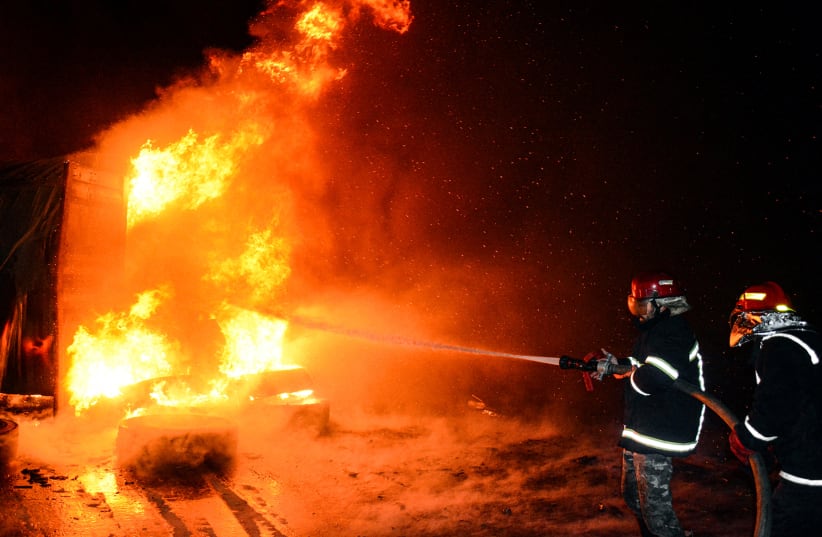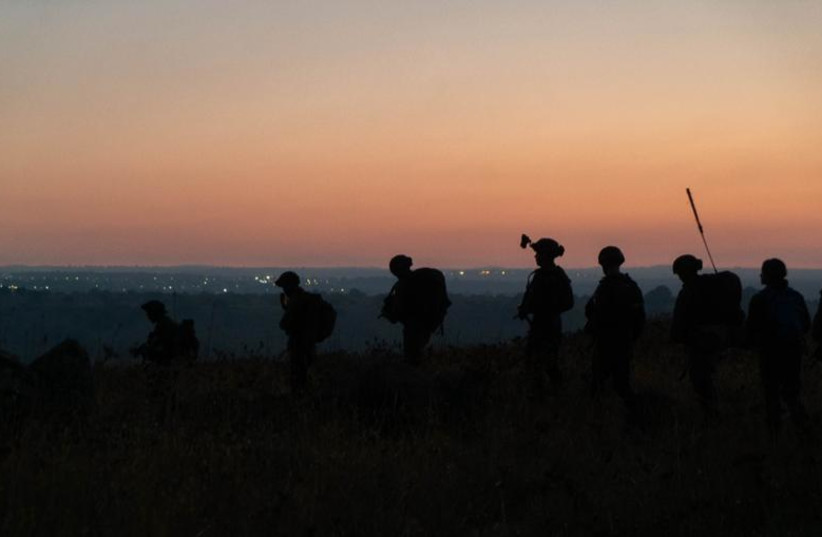Hezbollah is reportedly deploying air defense systems in Syria, where it would be able to defend against Israeli airstrikes there as well as in Lebanon.
According to the Alma Research Center, the group is deploying the systems to the Qalmoun Mountains region northwest of Damascus, which borders Lebanon’s Bekaa Valley, home to Hezbollah’s logistical and operational rear base.
The group is believed to have the SA8 low-altitude, short-range tactical surface-to-air missile system, SA17, and SA22 man-portable air defense missile systems in its arsenal in order to defend against Israeli airstrikes.
Hezbollah has fired on Israeli platforms using its air defenses, most recently in February of last year, when an Israeli drone was fired on by antiaircraft fire during routine operations over Lebanese territory. It was not hit and continued on its mission. In October 2019 an SA8 surface-to-air missile was fired at an Israeli drone but also missed its mark.
The report comes as military officials warned that the Israel Air Force’s freedom of operation in Lebanese skies has been compromised over the past year after air defense systems were deployed in the area.
In addition to deploying the batteries to Syria, Maj. (ret.) Tal Beeri, head of the research department at the Alma Center, told The Jerusalem Post that Hezbollah has also deployed SA8 batteries in south Lebanon.
According to Beeri, these systems can “theoretically” pose a threat to Israeli jets operating over Lebanon.
In addition to its independent air-defense system, Beeri said, it is possible that Hezbollah operatives have trained on Iran’s Bavar-373. The Iranian system is based on Russia’s SA-300 air-defense system that can supposedly simultaneously engage up to six targets up to 250 km. away with 12 missiles.
Iran says the system can target jet bombers and fighters, stealth aircraft and drones, as well as cruise and ballistic missiles.
“It is possible that Hezbollah has trained on it, and, in all probability, we estimate that there have been attempts to transfer it to the group,” Beeri said.
In October, Israel’s defense establishment said that it had identified growing Iranian efforts to improve its air defenses in Syria, Lebanon, Iraq and other locations, in an attempt to disrupt Israel’s “war between the wars” campaign and bring down an Israeli aircraft.
The Iranian systems have helped Syria improve its capabilities, shorten its response time to attacks and destroy more munitions fired by the Jewish state.
While the IDF’s aerial superiority has worsened, the military believes that it still has the ability to carry out operations over Lebanon and Syria despite the threat posed by Iranian and Hezbollah air-defense systems.
Tensions with both Lebanon and Syria remain high, with 31 rockets being fired from Lebanon (by both Palestinian operatives and Hezbollah) and two long-range rockets fired from Syria over the past year. In response, the IDF fired munitions from fighter planes and some 200 artillery shells.
Hezbollah has also violated Israeli airspace, sending 74 drones into Israel over the past year, down from 94 drones in 2020.

